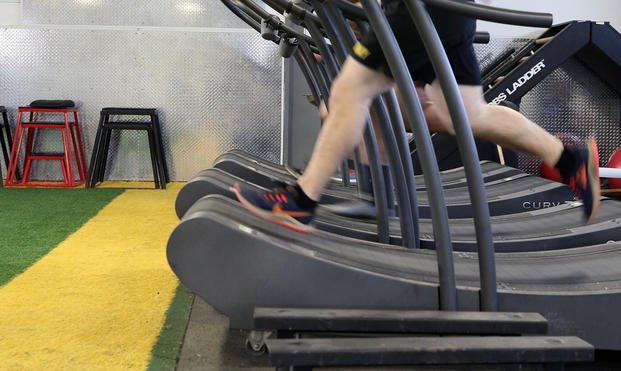Here is a great question from a sailor seeking to improve his PFT run time and has gathered extra information about training with heart-rate monitor training.
"How much emphasis should I put on target heart rate while training for the PRT run? The Navy PRT [physical readiness training] webpage says the target heart rate for my age group (25 years) is 117-146 bpm, with a max HR of 195. I'm working on faster run times, which means I'm pacing faster and really pushing myself. I don't own a HR monitor, but the treadmill I used today indicated that I quickly worked my HR up to a pretty steady 172 BPM. I was physically comfortable with that, but is this a problem, or is this what to expect when pushing yourself to a new level? I tried staying in the 'target zone,' but that was just way too slow.
"All I'm trying to do is get faster, not lose weight, so what's the use of a target heart rate in PRT training?"
Training with a heart-rate monitor can offer immediate feedback and give you an indication of effort, but if you work out enough, you know when you are at your peak exertion levels. I have used and still use my heart-rate monitor infrequently, especially when I start a new phase of my workout.

When I change my routine and lift harder or do distance running instead of speed work, I like to gauge where my heart rate is when I reach muscle failure or a comfortable running pace. Where I get the most use is observing my recovery time from near max heart rate to 40%-50%. This is a good way to gauge if you are getting fitter with your routine. If your recovery time decreases with physical fitness test (PFT)-type exercises, you are getting in better shape.
You do not need to adhere to the 117-146 beats-per-minute zone for your PRT training. If you are training to ace the PT and the run, you will need to build speed through interval and faster pace training. The heart-rate zones you typically see on the cardio machines are target zones for you to burn fat optimally (staying aerobic) and not pushing the envelope to increase your PRT scores.
Now if you can run faster at your PRT goal pace and have your heart rate in the aerobic target zone, that is impressive. This is how champion marathon runners can hit five-minute miles for 26 miles. This takes hard-core conditioning training, and at that level, a heart-rate monitor is almost essential to improving performance.
At the National Strength and Conditioning Association, the Tactical Strength and Conditioning component utilizes the information obtained from heart-rate monitors worn by special ops, police SWAT team and firefighters during their jobs. Heart-rate monitors are useful in seeing exertion, and adrenaline rushes occur during the performance of their duties.
Using this information, you can create workout plans that can better simulate the job experience by adding short sprints between sets of weight training or calisthenics, for instance. Learning how to recover from the adrenaline rush is helpful in managing stress, either on the job or not.
In a nutshell, heart-rate monitors are very useful, whether you are a beginner or an advanced or tactical athlete. However, to improve your running, I would focus on speed and endurance workouts. Check out the "Running and Cardio article archive" for previous articles to help you.
Stew Smith is a former Navy SEAL and fitness author certified as a Strength and Conditioning Specialist (CSCS) with the National Strength and Conditioning Association. Visit his Fitness eBook store if you're looking to start a workout program to create a healthy lifestyle. Send your fitness questions to stew@stewsmith.com.
Want to Learn More About Military Life?
Whether you're thinking of joining the military, looking for fitness and basic training tips, or keeping up with military life and benefits, Military.com has you covered. Subscribe to Military.com to have military news, updates and resources delivered directly to your inbox.


















